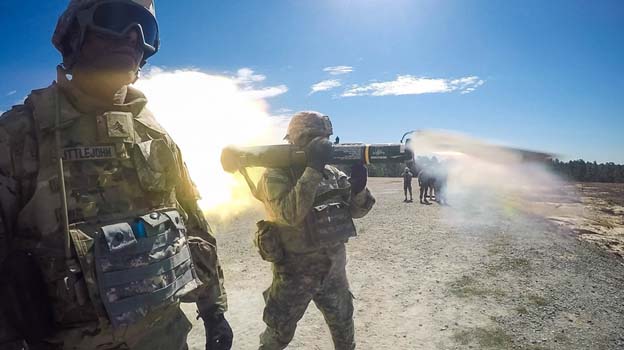U.S. Army Researchers developed a two-step approach to translate blast-induced physical and molecular changes in the rat brain to the human brain, leveraging a combination of experimental and mathematical methods.
The conflicts in Iraq and Afghanistan have shown us a connection between blast-overpressure (BOP) exposure and adverse health effects on Service members, including impairment in memory and concentration, as well as changes in behavior. While animal studies contribute to our knowledge of blast injury, there is currently no direct method to translate or scale blast-induced brain injury findings from animals to humans. To address this gap, Army researchers developed a modeling methodology to convert, or translate, the blast-induced changes found in the rat brain to the human brain.
The Army team developed a two-step approach, combining experimentation and computation, to translate the physical (biomechanical) and molecular (protein) changes resulting from BOP exposure in the rat brain into findings relevant to the human brain. During the first step of this approach, the researchers exposed rats to single blast-wave exposures of varying magnitude to characterize blast-induced protein changes in the rat brain. Then, they used a three-dimensional (3-D) high-fidelity computational model of the rat brain to predict blast-induced biomechanical responses, such as brain-tissue stresses, that can serve as surrogates for the protein changes. During the second step of the approach, the researchers conducted blast simulations using a 3-D high-fidelity computational model of the human head and leveraged the biomechanical responses identified in the first step to generate a rat-to-human scaling formula and estimate the BOP exposure that would yield similar brain responses across species. The researchers identified equivalent exposures for three brain regions (e.g., corpus callosum, hippocampus, and brainstem) but noted region-specific differences in brain responses that require independent mathematical formulas. In addition to these findings, the Army researchers concluded that the human brain requires an exposure to a blast wave of a higher magnitude to elicit similar changes to the ones observed in the rat brain.
In conclusion, Army researchers developed and outlined a novel approach to translate blast-exposure findings from the rat brain to the human brain. This work provides an opportunity for the blast-injury research community to leverage this approach to advance blast-induced brain injury research. Specifically, for a given BOP and the associated protein change observed in an animal brain, researchers could implement this methodology to identify the blast exposure that yields the same outcome in humans.

Rubio, J.E., Subramaniam, D.R., Unnikrishnan, G., Siva, V., Sajja, S.S., Van Albert, S., Rossetti, F., Frock, A., Nguyen, G., Sundaramurthy, A., Long, J.B., & Reifman, J. (2022). A biomechanical-based approach to scale blast-induced molecular changes in the brain. Scientific Report, 12(1). https://doi.org/10.1038/s41598-022-17967-6
We acknowledge support from the U.S. Department of Defense, Defense Health Program managed by the U.S. Army Military Operational Medicine Research Program Area Directorate (Fort Detrick, MD). The Henry M. Jackson Foundation was supported by the U.S. Army Medical Research and Development Command under Contract No. W81XWH20C0031.
Your 15 minute session will timeout in approximately 10 minutes.
If you're in the middle of entering information, please close this warning and save your progress (if possible) or finish up your task.
If your session fully times out, you will lose any un-saved work.
Your current Blast Injury Research Program session has expired.
Your next click will take you away from the private area, and you will lose any work you have in-progress.
Please enter your email address, and try again.